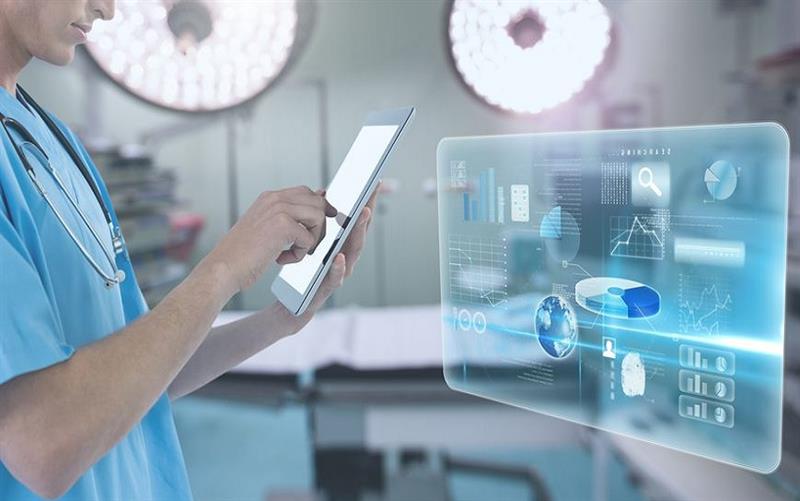
The integration of software into the healthcare sector has brought about transformative changes, revolutionizing the way healthcare is delivered and managed. Through electronic health records, telemedicine platforms, data analytics tools, and patient engagement applications, software has enhanced efficiency, improved patient care, and driven innovation in healthcare.
Furthermore, healthcare software contributes to cost savings by optimizing workflows, preventing complications through early detection, and reducing the need for in-person visits. It also ensures compliance with regulatory requirements, safeguarding patient privacy and data security.
The adoption of software in healthcare represents a significant step forward in modernizing and improving the delivery of healthcare services. By leveraging the capabilities of software, healthcare organizations can continue to advance patient care, drive efficiencies, and innovate in ways that benefit individuals and communities worldwide.
Software has revolutionized the healthcare sector in numerous ways, bringing about a myriad of benefits:
1. Efficiency:
Healthcare software streamlines administrative tasks such as appointment scheduling, billing, and patient record management, reducing paperwork and saving time for healthcare professionals.
i. Administrative tasks like appointment scheduling, billing, and managing patient records are often time-consuming and prone to errors when done manually. Healthcare software automates these processes, reducing the administrative burden on healthcare professionals.
ii. Electronic Health Records (EHRs) digitize patient information, making it easily accessible to authorized personnel across different departments or facilities. This streamlines workflows and eliminates the need for paper-based record-keeping systems.
2. Improved Patient Care:
Electronic Health Records (EHRs) allow for better coordination of care among healthcare providers, leading to improved patient outcomes. Access to comprehensive patient data enables more informed decision-making and personalized treatment plans.
i. EHRs consolidate patient information from various sources, including medical history, lab results, medications, and allergies, into a single electronic record. This comprehensive view of a patient's health enables healthcare providers to make more informed decisions and tailor treatment plans to individual needs.
ii. Decision support tools integrated into healthcare software can alert healthcare professionals to potential drug interactions, allergies, or gaps in care, enhancing patient safety and outcomes.
3. Remote Monitoring and Telemedicine:
Software enables remote monitoring of patients' health status and facilitates telemedicine consultations, making healthcare more accessible to remote or underserved populations. This is particularly crucial during emergencies or in situations where physical access to healthcare facilities is limited.
i. Healthcare software enables the remote monitoring of patients' vital signs, symptoms, and adherence to treatment plans through wearable devices or home monitoring systems. This real-time data allows healthcare providers to intervene promptly if any issues arise.
ii. Telemedicine platforms facilitate virtual consultations between patients and healthcare providers, enabling access to medical care from the comfort of home. This is especially valuable for patients in rural or underserved areas, those with mobility issues, or during public health crises like the COVID-19 pandemic.
4. Enhanced Communication:
Healthcare software facilitates seamless communication among healthcare providers, enabling efficient collaboration and the exchange of critical patient information. This leads to quicker decision-making and better-coordinated care.
i. Healthcare software facilitates communication and collaboration among members of the healthcare team, including physicians, nurses, specialists, and allied health professionals. Secure messaging platforms allow for quick exchange of patient information, test results, and treatment updates, leading to more coordinated care.
ii. Interoperability standards ensure that different software systems used by various healthcare providers can communicate with each other, facilitating seamless data exchange and care coordination across different healthcare settings.
5. Data Analytics and Insights:
Advanced software tools allow healthcare organizations to analyze large datasets to identify trends, patterns, and insights that can improve healthcare delivery, population health management, and resource allocation.
i. Healthcare organizations generate vast amounts of data from patient records, medical devices, and administrative systems. Healthcare software with robust analytics capabilities can analyze this data to identify trends, patterns, and correlations that may not be apparent through manual review.
ii. Data-driven insights can inform clinical decision-making, population health management strategies, and resource allocation efforts. For example, predictive analytics can help identify patients at risk for certain conditions or readmissions, allowing for proactive interventions to improve outcomes and reduce costs.
6. Patient Engagement and Education:
Software applications empower patients to take a more active role in their healthcare by providing access to educational resources, appointment reminders, and health tracking tools. This fosters better engagement and adherence to treatment plans.
i. Patient portals and mobile health apps empower individuals to actively participate in their healthcare journey by providing access to their medical records, appointment scheduling tools, and educational resources.
ii. Health tracking features, such as medication reminders, activity trackers, and symptom journals, help patients monitor their health status and adhere to treatment plans, leading to better outcomes and increased satisfaction with care.
7. Cost Savings:
By automating repetitive tasks, reducing paperwork, and optimizing workflows, healthcare software helps organizations operate more efficiently, leading to cost savings in the long run. Additionally, early detection of health issues through data analysis can prevent costly complications.
i. By streamlining workflows, reducing paperwork, and optimizing resource utilization, healthcare software helps organizations operate more efficiently and cost-effectively.
ii. Early detection of health issues through data analytics can prevent costly complications, hospital readmissions, and emergency room visits. Additionally, telemedicine and remote monitoring can reduce the need for in-person visits, saving both patients and healthcare providers time and money.
8. Regulatory Compliance:
Healthcare software often comes with built-in features to ensure compliance with healthcare regulations and standards, such as HIPAA (Health Insurance Portability and Accountability Act) in the United States. This helps healthcare organizations avoid penalties and maintain patient data security.
i. Healthcare software developers must adhere to strict regulatory requirements, such as HIPAA in the United States, to ensure the security and privacy of patient information.
ii. Software features such as access controls, encryption, audit trails, and regular security updates help healthcare organizations maintain compliance with relevant regulations and standards, mitigating the risk of data breaches and legal penalties.